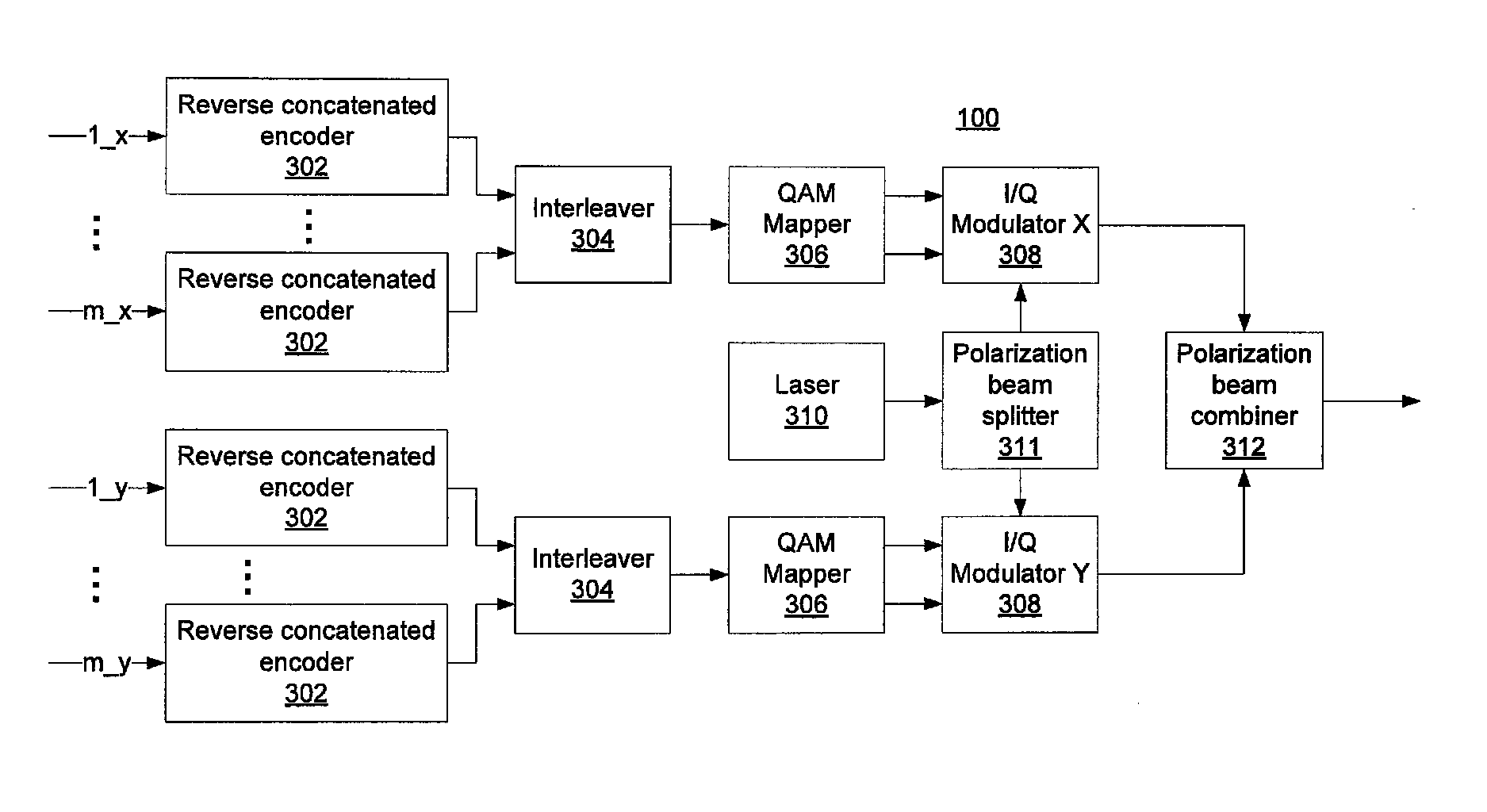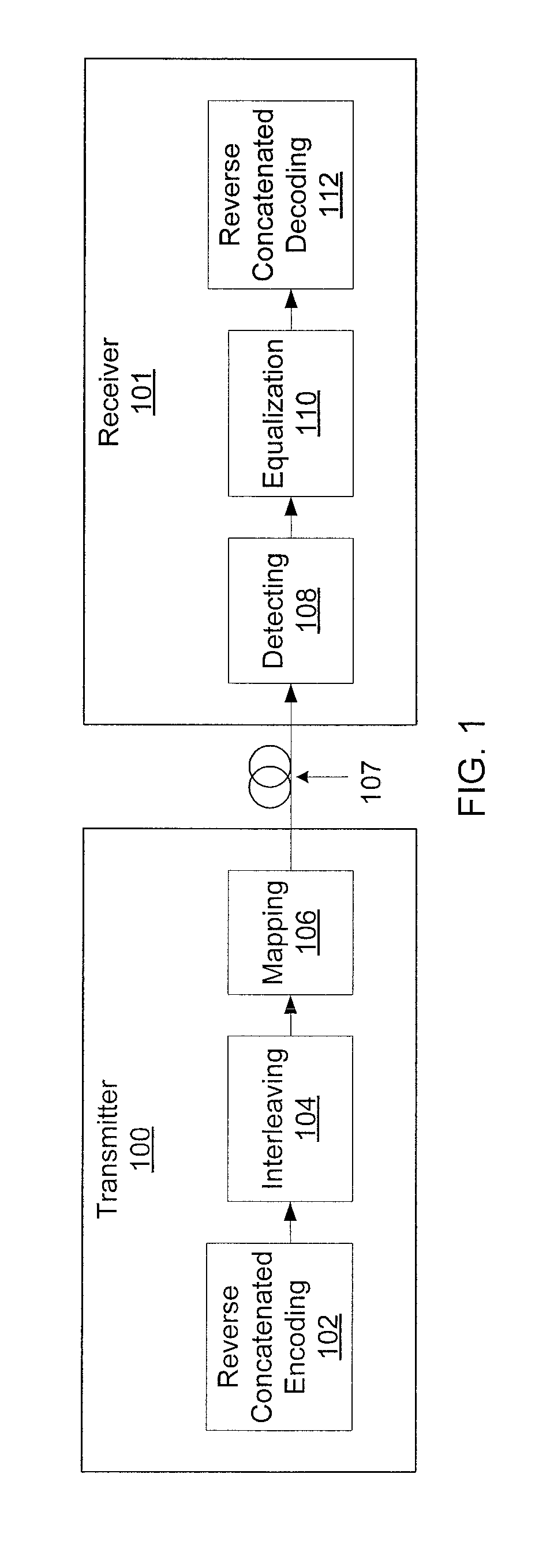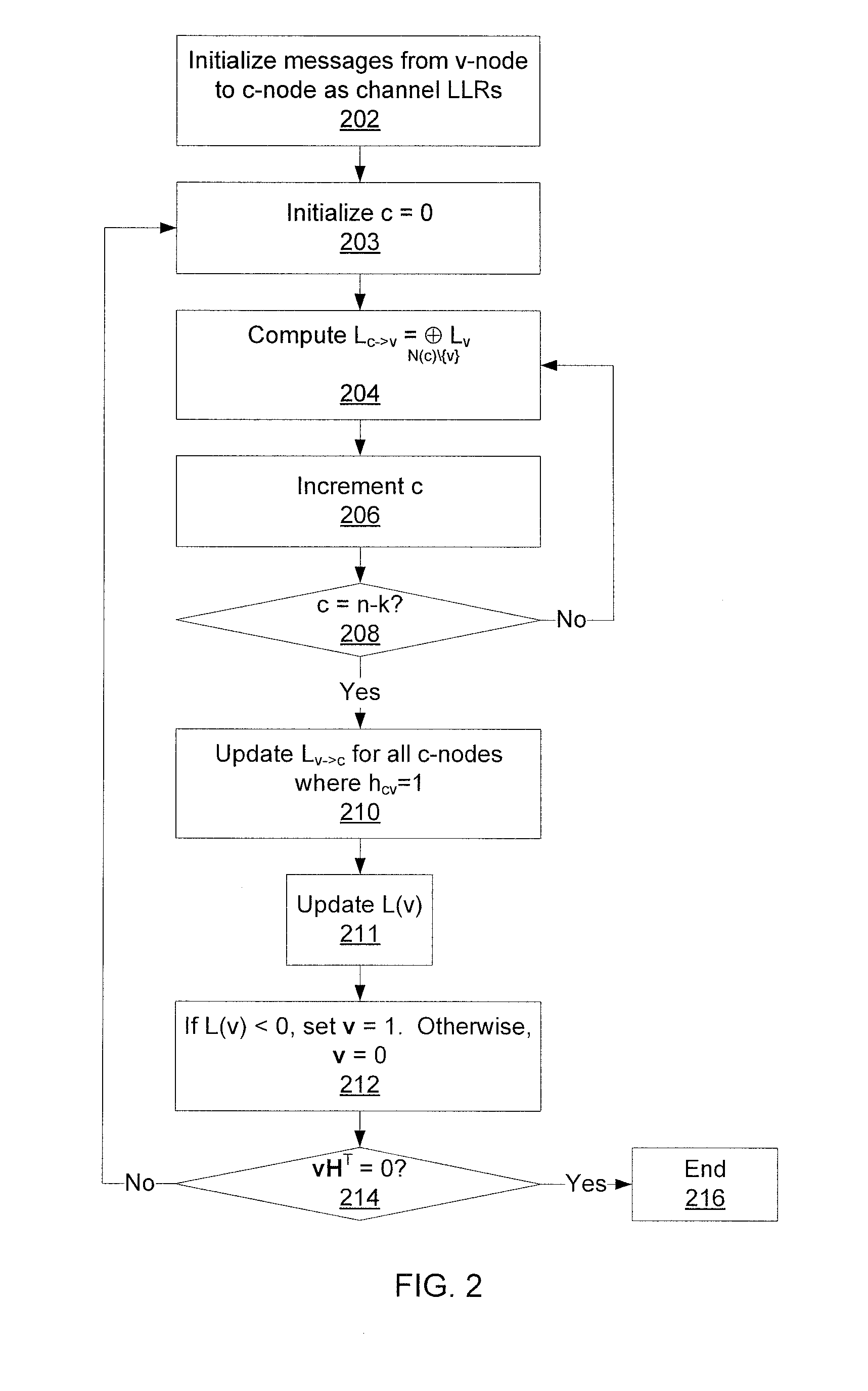Reverse concatenated encoding and decoding
a reverse concatenation and encoding technology, applied in the field of forward error correction (fec) for high-speed serial optical transport, can solve problems such as the increasing sensitiveness of transmission to errors, and achieve the effect of improving decoding performan
- Summary
- Abstract
- Description
- Claims
- Application Information
AI Technical Summary
Benefits of technology
Problems solved by technology
Method used
Image
Examples
Embodiment Construction
[0020]Through the use of concatenated codes, target net coding gains can be achieved even with reasonably short low-density parity-check (LDPC) codes of low girth (e.g., girth of 6 or 8). However, short LDPC codes of low girth and reasonable LDPC decoder complexity (having, e.g., column weight 3 in a min-sum-with-correction-term decoder) exhibit error floors in the region of interest for optical communications. Using a girth 6 LDPC code as an inner code and a Reed-Soloman code as an outer code, the error floor may be eliminated, but the net coding gain is far below that of large-girth LDPC codes.
[0021]To achieve the bit error rate (BER) performance of large-girth LDPC codes using reasonably short concatenated codes, the present principles make use of an LDPC code as an outer code and, e.g., a Reed-Muller (RM) or Hocquenghem, Bose, Ray-Chaudhuri (BCH) code as an outer code. Because BCH and RM codes can be efficiently decoded using maximum a posteriori (MAP) probability, the reliable ...
PUM
 Login to View More
Login to View More Abstract
Description
Claims
Application Information
 Login to View More
Login to View More - R&D
- Intellectual Property
- Life Sciences
- Materials
- Tech Scout
- Unparalleled Data Quality
- Higher Quality Content
- 60% Fewer Hallucinations
Browse by: Latest US Patents, China's latest patents, Technical Efficacy Thesaurus, Application Domain, Technology Topic, Popular Technical Reports.
© 2025 PatSnap. All rights reserved.Legal|Privacy policy|Modern Slavery Act Transparency Statement|Sitemap|About US| Contact US: help@patsnap.com



